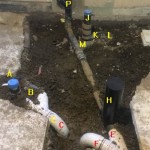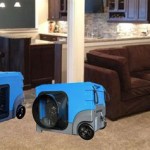Best Sump Pump For Basement Flooding: A Comprehensive Guide
Basement flooding represents a significant concern for homeowners, potentially leading to structural damage, mold growth, and loss of personal belongings. A reliable sump pump serves as a critical defensive measure against this pervasive issue, effectively removing accumulated water and preventing widespread damage. Selecting the optimal sump pump requires careful consideration of various factors, including the pump's type, power, construction material, and specific features. This article provides a comprehensive overview of sump pumps and aids in identifying the most suitable option for mitigating basement flooding risks.
The primary function of a sump pump is to automatically remove water that accumulates in a sump pit, typically located in the basement or crawlspace. Water can enter the pit through natural water sources, such as groundwater seepage, or as a result of heavy rainfall. The pump activates when the water level reaches a predetermined point, discharging the water away from the foundation of the house, thereby preventing water from rising and flooding the basement. Effective sump pump operation is crucial for maintaining a dry and healthy living environment.
Understanding Sump Pump Types: Submersible vs. Pedestal
Sump pumps are broadly categorized into two primary types: submersible and pedestal pumps. Each type possesses distinct characteristics that dictate its suitability for specific applications.
Submersible Sump Pumps: As the name suggests, submersible pumps are designed to be fully submerged in the sump pit. This design offers several advantages, including quieter operation and greater efficiency. Because the motor is submerged, it is cooled directly by the surrounding water, preventing overheating and extending the lifespan of the pump. Submersible pumps also tend to be more robust and capable of handling solids and debris that may enter the sump pit, making them a preferred choice for situations where water quality is questionable. The initial cost of a submersible pump may be higher than that of a pedestal pump, however, the increased durability and efficiency often translate to lower long-term operating costs.
Pedestal Sump Pumps: Pedestal pumps, in contrast, have their motor mounted on a pedestal above the sump pit. Only the intake hose is submerged. This design makes the motor more accessible for maintenance and repairs. Pedestal pumps are generally less expensive than submersible pumps, making them an attractive option for homeowners on a budget. However, they are typically noisier than submersible pumps due to the exposed motor. Furthermore, pedestal pumps are more susceptible to damage from debris and solids in the water, potentially requiring more frequent maintenance or replacement. Due to the motor being exposed, they are also less efficient in cooling and have a shorter lifespan when compared to submersible pumps.
Choosing between a submersible and pedestal pump depends largely on the specific conditions of the basement and the homeowner's priorities. For basements prone to flooding with debris-laden water, submersible pumps are generally the superior choice. For situations where budget is a primary concern and water is generally clean, a pedestal pump may suffice.
Key Considerations When Selecting a Sump Pump
Beyond the basic types, several key factors influence the performance and reliability of a sump pump. Carefully evaluating these factors is essential for selecting a pump that effectively meets the specific needs of a given basement.
Pumping Capacity (Gallons Per Hour - GPH): The pumping capacity, measured in gallons per hour (GPH), indicates the volume of water the pump can remove within a given timeframe. The required GPH depends on the severity of flooding in the basement. Basements prone to frequent or heavy flooding necessitate pumps with higher GPH ratings. Consider the dimensions of the basement, the local rainfall patterns, and the level of groundwater seepage when determining the appropriate GPH. Consulting with a plumbing professional can provide valuable insights into the specific GPH requirements for a particular property. It is always better to slightly overestimate the required GPH than to underestimate it, ensuring the pump can handle peak water influx situations.
Horsepower (HP): The horsepower (HP) rating indicates the power of the pump's motor. Higher HP generally translates to greater pumping capacity and the ability to handle more challenging water conditions, such as the presence of solids or a high vertical lift (the distance the water must be pumped vertically to be discharged). While higher HP may seem desirable, it is essential to consider the pump's energy consumption. A higher HP pump will consume more electricity, increasing operating costs. Select an HP rating that adequately meets the pumping requirements without excessive energy consumption.
Switch Type: The switch mechanism that activates and deactivates the pump is a critical component influencing its reliability. Common switch types include float switches and electronic switches. Float switches are the most common and use a buoyant float that rises with the water level, activating the pump when it reaches a certain point. Electronic switches use sensors to detect the water level and activate the pump accordingly. Electronic switches are generally more reliable and less prone to malfunction than float switches, but they may also be more expensive. Consider the reliability and sensitivity requirements when selecting a switch type.
Construction Material: The materials used in the construction of the pump significantly impact its durability and lifespan. Sump pumps are typically made from cast iron, thermoplastic, or stainless steel. Cast iron pumps are known for their robustness and ability to dissipate heat, while thermoplastic pumps are lightweight and corrosion-resistant. Stainless steel pumps offer a balance of durability and corrosion resistance. Choose a material that is appropriate for the anticipated water conditions and the desired lifespan of the pump.
Power Source: The standard sump pump is powered by the home's electrical grid. However, during power outages, which often coincide with severe storms and flooding, a battery backup system is crucial. A battery backup sump pump ensures continued operation even when the primary power source is unavailable. Consider investing in a sump pump with an integrated battery backup system or purchasing a standalone backup system to provide uninterrupted flood protection.
Essential Features and Technologies in Modern Sump Pumps
Modern sump pumps incorporate various advanced features and technologies designed to enhance their performance, reliability, and ease of use. These features can significantly improve the overall effectiveness of the sump pump system.
Alarm Systems: Sump pump alarm systems provide audible or visual alerts when the pump malfunctions or when the water level in the sump pit exceeds a predetermined threshold. These alarms can alert homeowners to potential flooding problems, allowing them to take corrective action before significant damage occurs. Some alarm systems even offer remote monitoring capabilities, sending alerts to smartphones or other devices.
Self-Cleaning Impellers: The impeller is the rotating component of the pump that moves water. Impellers can become clogged with debris, reducing the pump's efficiency. Self-cleaning impellers are designed to prevent clogging, ensuring optimal pump performance. These impellers typically feature specialized vanes or designs that dislodge debris as the pump operates.
Variable Speed Pumps: Variable speed pumps adjust their pumping speed based on the water inflow rate. This feature allows the pump to operate more efficiently, reducing energy consumption and minimizing noise. Variable speed pumps can also extend the lifespan of the pump by reducing wear and tear on the motor.
Wi-Fi Connectivity: Increasingly, sump pumps are equipped with Wi-Fi connectivity, allowing homeowners to monitor the pump's performance remotely via a smartphone app. These apps provide real-time data on water levels, pump status, and any error messages. Wi-Fi connectivity enables proactive troubleshooting and ensures the pump is functioning correctly.
Selecting the "best" sump pump necessitates evaluating the specific needs of individual homeowners and basements. A thorough understanding of sump pump types, key considerations, and available features empowers homeowners to make informed decisions and protect their properties from the devastating effects of basement flooding. Regular maintenance, including cleaning the sump pit and testing the pump, is essential for ensuring continued reliable operation.

The Best Sump Pump Systems For Your Home In Ontario A Model By Review Of Four Major Models Hamilton Oakville Burlington On
The Best Sump Pump For 2024

The Best Sump Pump Systems For Your Home In Ontario A Model By Review Of Four Major Models Hamilton Oakville Burlington On

Best Sump Pumps For Your Basement Or Crawlspace The Home

Best Sump Pumps 2024 Home Appliance Reviews

5 Best Flood Sump Pumps For Removing Dirty Water Emptying Ponds And Flooded Pyracantha Co

How To Know The Best Sump Pump For Your Needs Pressure Washr

Sump Pump Features Parts Basement Systems

The Best Pumps For Basement Flooding

The Best Sump Pump Systems For Your Home In Ontario A Model By Review Of Four Major Models Hamilton Oakville Burlington On
Related Posts







